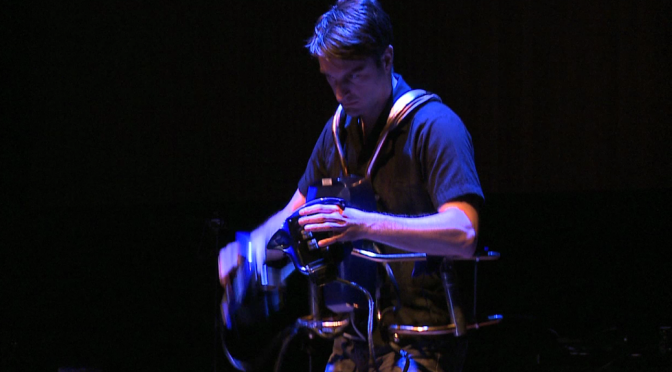Immortal-machine is my first solo work for the méta-instrument digital musical instrument. The instrument features forty-six discrete pressure-sensing ‘keys’ or touch points, thumb sliders, pivoting hand grips (measuring hand rotation) and elbow ‘ball and socket’ joints (measuring the horizontal and vertical movements of the forearms over an angle of ninety degrees) – fifty-four channels of continuous control data, in total. In composing and performing my composition, I am interested in investigating whether the concept of an ‘immortal machine’ is an appropriate analogy for the human body. Important aspects of Immortal-machine are, on the one hand, a contextualisation of the human body as a hyper-body (‘hyper’ referring to the tradition of the hyperinstrument or metainstrument) and, on the other hand, the drawing out of possible ‘superhuman’ capabilities and higher-level corporeal models through a reinterpretation of the human body in relation to its surrounding environment. My work with the méta-instrument is aimed at furthering my ideas on concurrence and counteraction in digital musical instrument composition.
“Thank you Darryl, for your help re-soldering and calibrating.”




